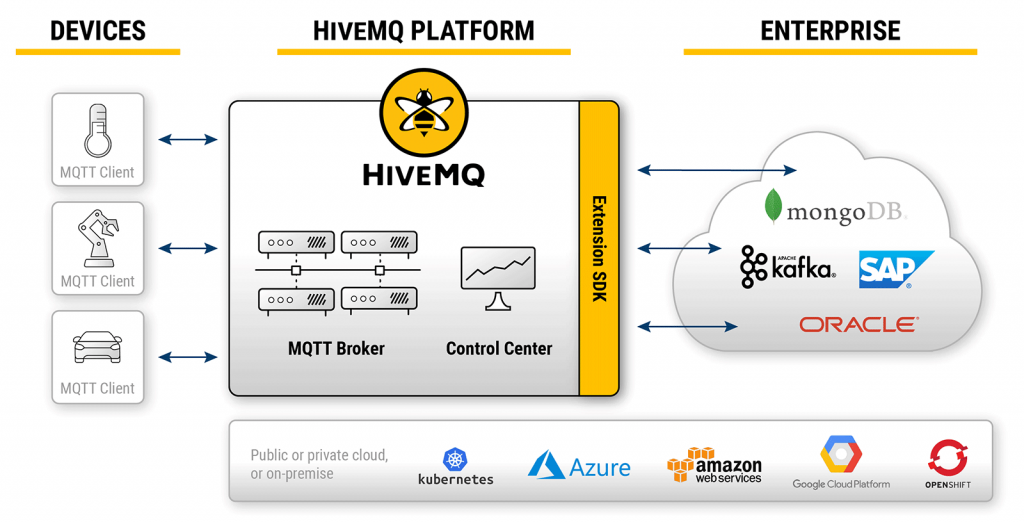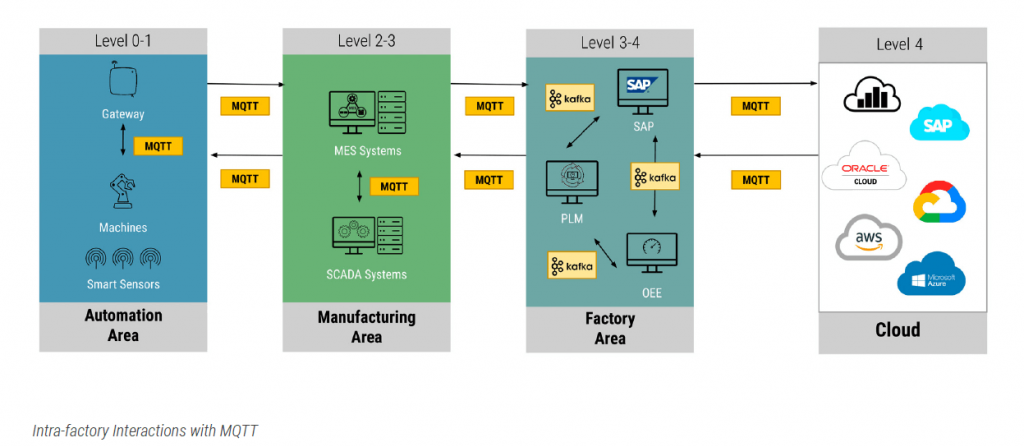Call us on 03 8806 8356
Call us on 03 8806 8356

The MQTT protocol is the de-facto standard for IoT messaging. Standardized by OASIS and ISO, MQTT publish/subscribe protocol provides a scalable and reliable way to connect devices over the Internet. Today, MQTT is used by many companies to connect millions of devices to the Internet.
Key Features
HiveMQ is an MQTT broker and a client based messaging platform designed for the fast, efficient and reliable movement of data to and from connected IoT devices. It uses the MQTT protocol for instant, bi-directional push of data between your device and your enterprise systems.
HiveMQ is built to address some of the key technical challenges organizations face when building new Internet of Things applications, including:

Scalable MQTT Broker
Reliable Data Delivery
Elastic Clustering
Enterprise-grade security
100% MQTT Compliant
Deploy Everywhere
Efficient Network Utilization
Enterprise Data Integration @Scale
Real-time Data Monitoring
Extension Framework and Marketplace
MQTT Client Libraries
Fully Managed MQTT Cloud Service
Modernizing the Manufacturing Industry with MQTT
Smart manufacturing is driving the manufacturing industry to modernize its software infrastructure. Whether you call it Industry 4.0 or the Industrial Internet of Things (IIoT), manufacturing is in the midst of a significant transformation. A key motivation in this push to modernize is that real-time data and dynamic decision-making yield meaningful performance improvements for businesses.
Current manufacturing infrastructure is costly to maintain, creates barriers to the distribution of data, integrates poorly with other systems, and blocks corporations from capitalizing on the advantages that digitalization creates. Successful transition to the next generation of manufacturing will require the adoption of new technologies that can integrate outdated existing systems with modern new systems.
In this whitepaper, we investigate the business drivers for modernization, technical challenges of adopting new technology, important emerging architecture patterns for modernizing software infrastructure, and recommendations for linking the different levels of automation in a factory with new MQTT-based messaging infrastructure. The goal of this whitepaper is to provide guidance to senior technology leaders in the manufacturing industry on how MQTT can serve as the key technology for developing the modern connected factory.
Business Drivers for Modernization
The end result of the drive toward modernization is the digitization of manufacturing.

Request for quotation, proposal or talk to us to learn more about HiveMQ MQTT Broker?
You are welcome to contact us at [email protected] or 03 8806 8356.
Copyright © 2016-19 Uniqmac Technologies. All rights reserved.
Uniqmac Technologies
Unit 6, 26 Rushdale Street
Knoxfield
Victoria 3180
T: 03 8806 8356
F: 03 8555 0816
E: [email protected]
